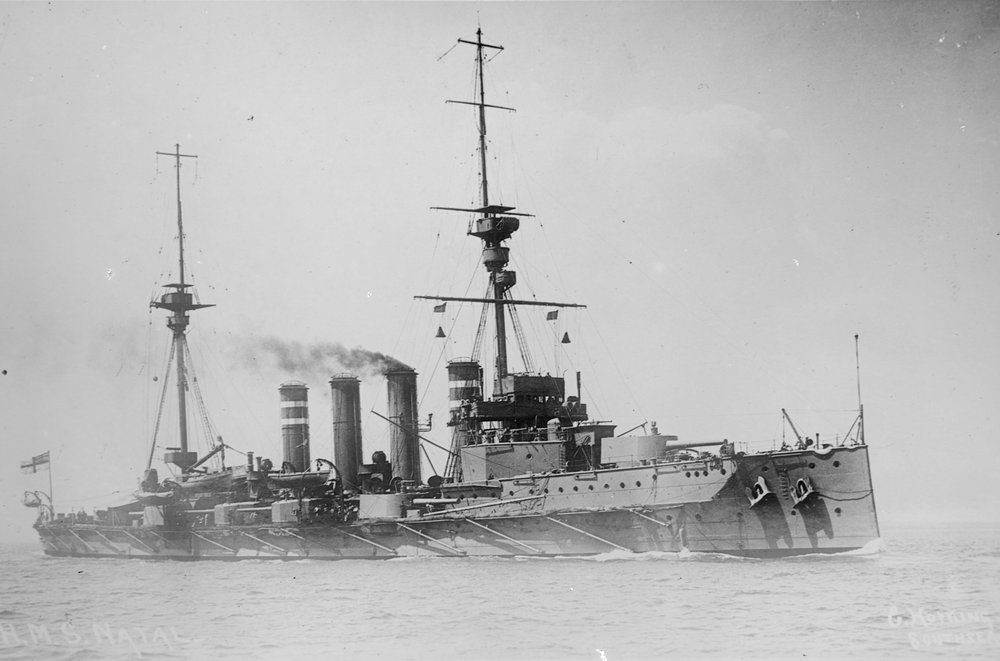
This gun was extensively used by both the Army and the Navy. Naval guns were the secondary armament on pre-dreadnought battleships and the main guns on armored cruisers. Some of these guns were later transferred to the Army after the ships were scrapped while others were reused on monitors built during World War I. The Army version was the standard coastal defense gun until well after the end of World War II. When Britain and Canada gave up their coastal defense artillery in 1956, a quantity were then sold to Portugal and Turkey where some of them may still remain.
Extracts from Admiral E.C. Troubridge's courtmartial regarding these guns include these comments: "The 9.2-inch Mark XI [guns used on HMS Defence] has always been known as an inaccurate gun. It is probably due to the high muzzle velocity. The 9.2-inch Mark X [guns]. . . are inaccurate at certain stages of wear of the gun. Otherwise they are accurate guns" and "For the 9.2-inch Mark X and XI and 7.5-inch Mark II the average spread [dispersion] was 200 - 250 yards at a range of 7000 - 8000 yards" (180 - 230 m spread at ranges of 6,400 - 7,300 m).
Of built-up construction and wire-wound. Suffered from "steel choke" and too large a propellant grain. In Army guns a smaller grain propellant was eventually adopted and a tapered inner "A" tube was gradually introduced, thus bringing them up to modern standards. A total of 112 guns were made for the Navy of which 12 were later transferred to land service and a further 170 guns were built for the Army. Actual bore length of all guns was 46.66 calibers.
The prefix "A" is sometimes found and indicates guns with a "pure couple" breech mechanism rather than the standard three-motion breech mechanism. Mark Xx designation covers guns with tapered inner "A" tubes. The suffix RT following Mark X or Mark Xx indicated a modification to fit World War II railway mountings, but it is believed that no guns were so altered. Two guns intended for the reconstructed Turkish ship Messudieh but never delivered were designated as XT. This weapon was to have used smaller propellant charges with a resulting reduction of 200 fps (61 mps) in the muzzle velocity, but could take the standard MD37 charge. The XT guns had Elswick three-motion short arm breech mechanisms and the British kept these as special reserve railway guns. The designation Mark Xv covers two Army guns that were wire-wound over only part of their length and with no "B" tube.
| Designation | 9.2"/47 (23.4 cm) Mark X |
|---|---|
| Ship Class Used On | King Edward VII, Drake, Cressy, Duke of Edinburgh and Warrior Classes
Monitors M15, M16, M17 and M18 1 |
| Date Of Design | about 1895 |
| Date In Service | 1900 |
| Gun Weight | 28.313 tons (28.67 kg) including breech mechanism |
| Gun Length oa | 442.4 in (11.237 m) |
| Bore Length | 429.3 in (10.950 m) |
| Rifling Length | 353.8 in (8.987 m) |
| Grooves | N/A |
| Lands | N/A |
| Twist | N/A |
| Chamber Volume | 8,123 in3 (133.1 dm3) |
| Rate Of Fire | 3 - 4 rounds per minute 2 3 |
- ^The monitors used spare guns and mountings originally intended for regunning Drake class cruisers.
- ^The Rate of Fire figure given above is found in references, but "Warrior to Dreadnought: Warship Development, 1860-1905" quotes Jellicoe's 1906 figures for rates of fire for these guns in gunlayers' tests and in battle practice and notes that the latter figures corresponded well to those actually attained by the Japanese at Tsushima:
Gunlayers Test 5 rounds per minute Battle Practice 2 rounds per minute - ^When used in monitors, the ROF is quoted at 1 round per minute. Most coastal guns also had a ROF of about 1 round per minute.
| Type | Bag |
|---|---|
| Projectile Types and Weights | APC 2crh 1a: 380 lbs. (172.4 kg)
CPC 2crh 1a: 380 lbs. (172.4 kg) HE 4crh 1a: 380 lbs. (172.4 kg) HE 5/10crh 1a: 391 lbs. (177.4 kg) |
| Bursting Charge | APC: 12.9 lbs. (5.9 kg)
CPC: 35.4 lbs. (16.1 kg) HE 4crh: 33.0 lbs. (15.0 kg) |
| Projectile Length | APC: N/A
CPC: 35.4 in (89.9 cm) HE 4crh: 32.1 in (81.5 cm) |
| Propellant Charge 2a | World War I
120 lbs. (54.4 kg) MD37 107 lbs. (48.5 kg) MD26 World War II
|
| Muzzle Velocity | MD37: 2,778 fps (847 mps)
MD26: 2,748 fps (838 mps) Standard charge: 2,748 fps (838 mps) Super charge: 2,872 fps (875 mps) |
| Working Pressure | N/A |
| Approximate Barrel Life | 450 rounds |
| Ammunition stowage per gun | King Edward VII: 150 rounds
Cressy and Drake: 105 rounds 3a Duke of Edinburgh and Warrior: 100 rounds M15: 120 rounds |
- ^MD charges were used prior to and during World War I while standard and super charges were used by coastal batteries during World War II.
- ^See mounting note below regarding the Mark V ammunition supply.
The following comments are by Nathan Okun:
The British Coast Defense Gun 9.2" APC shell weighed 380 lb and had a 3.4% filler (12.9 lb) for all versions made during World War I and World War II. The last version, the 9.2" Mark XIIA APC, had two versions, one made in Britain and one made in the US during World War II by Crucible Steel Company. The US version was identical to the British version as to the body shape, base plug, weight, and windscreen, but the nose of the shell was the US Navy early World War II very blunt point and it used a US-style early World War II AP cap and, I believe, the US Sheath Hardening Pattern, not the British more deformable World War II APC hardness pattern. Under test the US design satisfied all ballistic test specifications, though the base plug was exposed more by base slap breakage at oblique impact as it penetrated than the British softer lower body was. The British cup-shaped Patent Relief Base Plug worked though and both the US and British designs were still effective ("fit to burst") after penetrating the armor.
The post-World War I designs all used Shellite fillers, though those during World War I were much like their contemporaries and used Lyddite prior to 1918 and Shellite afterwards (there was a Greenboy version of this projectile, too).
I would have thought that with this large cavity, which was exactly the same as in World War I, the 9.2" Mark XIIA APC would have had problems with projectile breakup against thick armor at moderate obliquity (circa 1-caliber-thick plate at around 30 degrees obliquity). However, this was not the case. In fact, these projectiles -- both the US and British designs -- are, from the tests I have seen, THE BEST BRITISH APC PROJECTILES EVER MADE!! They penetrate armor better and remain in one piece under more extreme impact conditions (I even gave them a separate entry in FACEHARD's British projectile table). I have no idea why they were so good. Obviously there are "sweet spots" for every kind of mechanical design and this shell happens to be right on top of one.
| Elevation | Distance |
|---|---|
| 15 degrees | 15,500 yards (14,170 m)
@ 2,778 fps (847 mps) |
| 30 degrees | 22,000 yards (20,120 m) |
| Distance to target | Danger space |
|---|---|
| 8,000 yards (7,300 m) | 75 yards (69 m) |
| 12,000 yards (10,970 m) | 30 yards (27 m) |
| 16,000 yards (14,630 m) | 0 yards (0 m) |
| Elevation | Distance |
|---|---|
| 30 degrees | 25,700 yards (23,500 m)
@ 2,778 fps (847 mps) |
| Elevation | Distance |
|---|---|
| 35 degrees
Coastal Artillery with standard charges |
29,200 yards (26,700 m)
@ 2,748 fps (838 mps) |
| 35 degrees
Coastal Artillery with super charges 1b |
about 32,600 yards (29,810 m)
@ 2,872 fps (875 mps) |
| 35 degrees
Coastal Artillery with super charges 1b |
36,700 yards (33,560 m)
@ 2,872 fps (875 mps) |
- The gun mounting manual for this weapon says that the gunsights were calibrated up to 14,000 yards (12,800 m) which was for a 15 degree elevation and a muzzle velocity of 2,643 fps (806 mps).
- As built, naval mountings were only able to elevate to +15 degrees. Mountings later fitted to the monitors were modified to allow +30 degrees maximum elevation. See Mount / Turret notes, below.
| Range | Muzzle Velocity | Vertical Steel Plate |
|---|---|---|
| 3,000 yards (2,740 m) | 2,751 fps (839 mps) | 14 in (35.6 cm) |
| 4,550 yards (4,160 m) | 9.2 in (23.4 cm) |
These figures are from "British Battleships: 1860 to 1950".
| Range | Vertical KC Plate |
|---|---|
| 3,000 yards (2,740 m) | 9.7 in (24.6 cm) |
| 6,000 yards (5,480 m) | 7.7 in (19.6 cm) |
| 9,000 yards (8,230 m) | 5.3 in (13.5 cm) |
These figures are from "The Grand Fleet: Warship Design and Development 1906-1922" and assume a 90 degree inclination. These trials were conducted with salt-filled (blind) shells and almost certainly overstate the performance of British shells of the early twentieth century.
| Range | Angle of Obliquity | Striking Velocity | Vertical KC Plate |
|---|---|---|---|
| 3,000 yards (2,740 m) | 30 degrees | 1,826 fps (557 mps) | 6.5 in (16.5 cm) |
Data from "The Grand Fleet: Warship Design and Development 1906-1922."
| Designation | Single mounts 1c
Early Cressy class (2) and Drake (2): Mark V 2c King Edward VII (4), Duke of Edinburgh (6) and Warrior (6) classes: Mark VS (S = "Strengthened") 3c 4c Later Cressy class (2): Mark VI 5c Monitors (1): Mark V (modified) |
|---|---|
| Weight 6c | Mark V: 110 tons (112 mt)
Others: N/A |
| Elevation 7c | Naval Mountings: -5 / +15 degrees
Reworked Monitor Mountings: -5 / +30 degrees Army Coastal Artillery: -5 / +15, +30 or +35 degrees |
| Elevation Rate | N/A |
| Train | Pre-dreadnoughts: about +60 / -60 degrees
Armored Cruisers End guns: +142 / -142 degrees Beam guns: +60 / -60 degrees |
| Train Rate | N/A |
| Gun recoil | N/A |
| Loading Angle | N/A |
- ^These single mountings were hydraulically powered for training, elevating, loading and ramming.
- ^Mark V mountings were built by Elswick. Ammunition supply for these mountings was complicated, as can be seen in this description from "British Naval Gun Mountings:"
A protected cordite hoist on the mounting centre line delivered the charges direct from the magazine to the gunhouse. But shell supply was more complex. While full stowage was 105 rounds per gun, less than half could be fired in action. At the rear of the gunhouse eight ready-use shells were stowed. Thirty-two more were stowed within the 4 ft [1.2 m] deep barbette structuer (6 in armor) [15 cm] which also contained the turntable and training engine. There was a hatch in the gunhouse floor served by an overhead crane for these shells to be brought into the gunhouse when required. Replenishment thereafter was more complicated and much slower. Two unprotected shell hoists per mounting delivered from the shell room above the magazine to hatches in the upper deck. The turret then had to be trained so that a hatch in the overhanging rear of the gunhouse plumbed each hatch allowing sells to be lifted first into the gunhouse, then lowered through another hatch in the gunhouse floor into the barbette stowage area. Rate of fire was typically 3.5 rounds per gun per minute, until the ready ammunition was exhausted.
- ^I have been unable to find what "Strengthened" indicated for this mounting.
- ^Early in 1917 three Mark VS mountings altered to give +45 degree elevation were installed on the Belgian coast.
- ^Mark VI mountings were built by Vickers.
- ^Four spare Mark V mountings were reworked for the monitors by having their armor replaced with thin sheet steel and the rear of the shield removed entirely in order to reduce weight. Hydraulic machinery was also removed for the same reason and these mountings thus became completely hand worked. These changes reduced the total revolving weight by about 40 tons (41 mt).
- ^HMS Commonwealth and HMS Zealandia (King Edward VII class) and the monitors had their mountings modified to give +30 degrees maximum elevation.

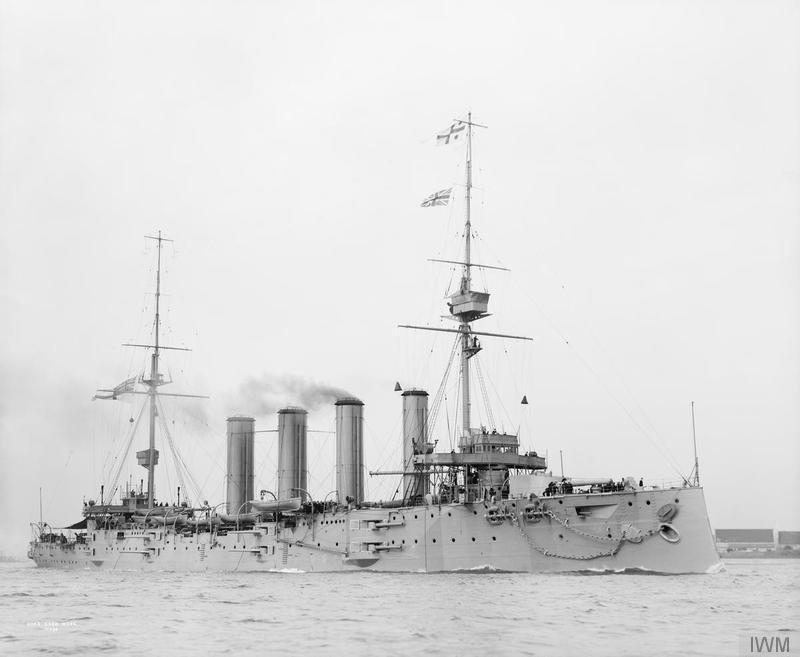
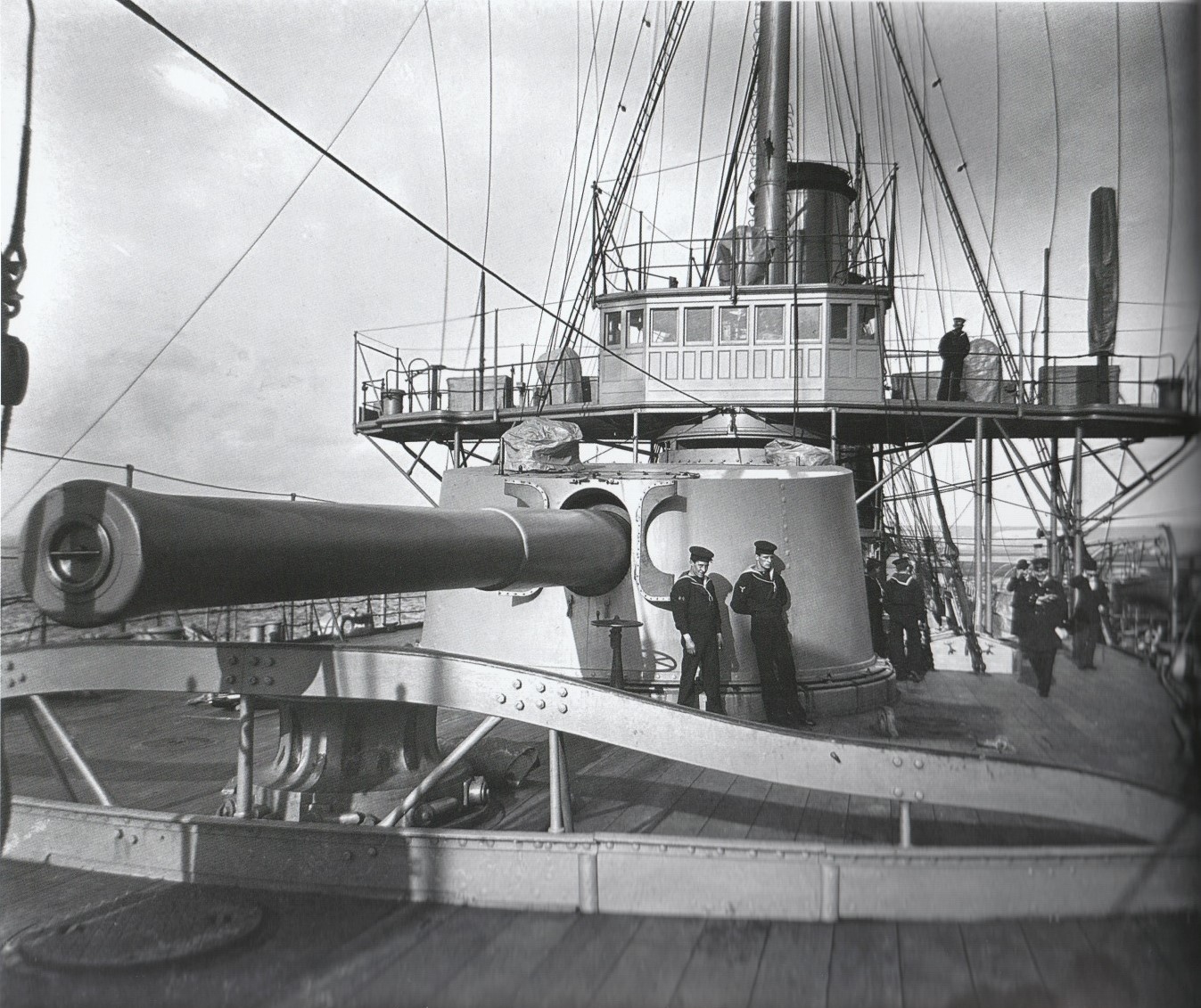
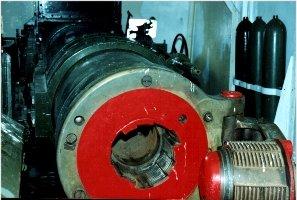
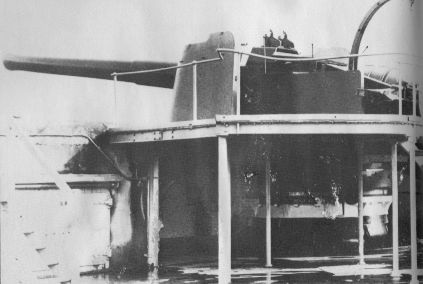
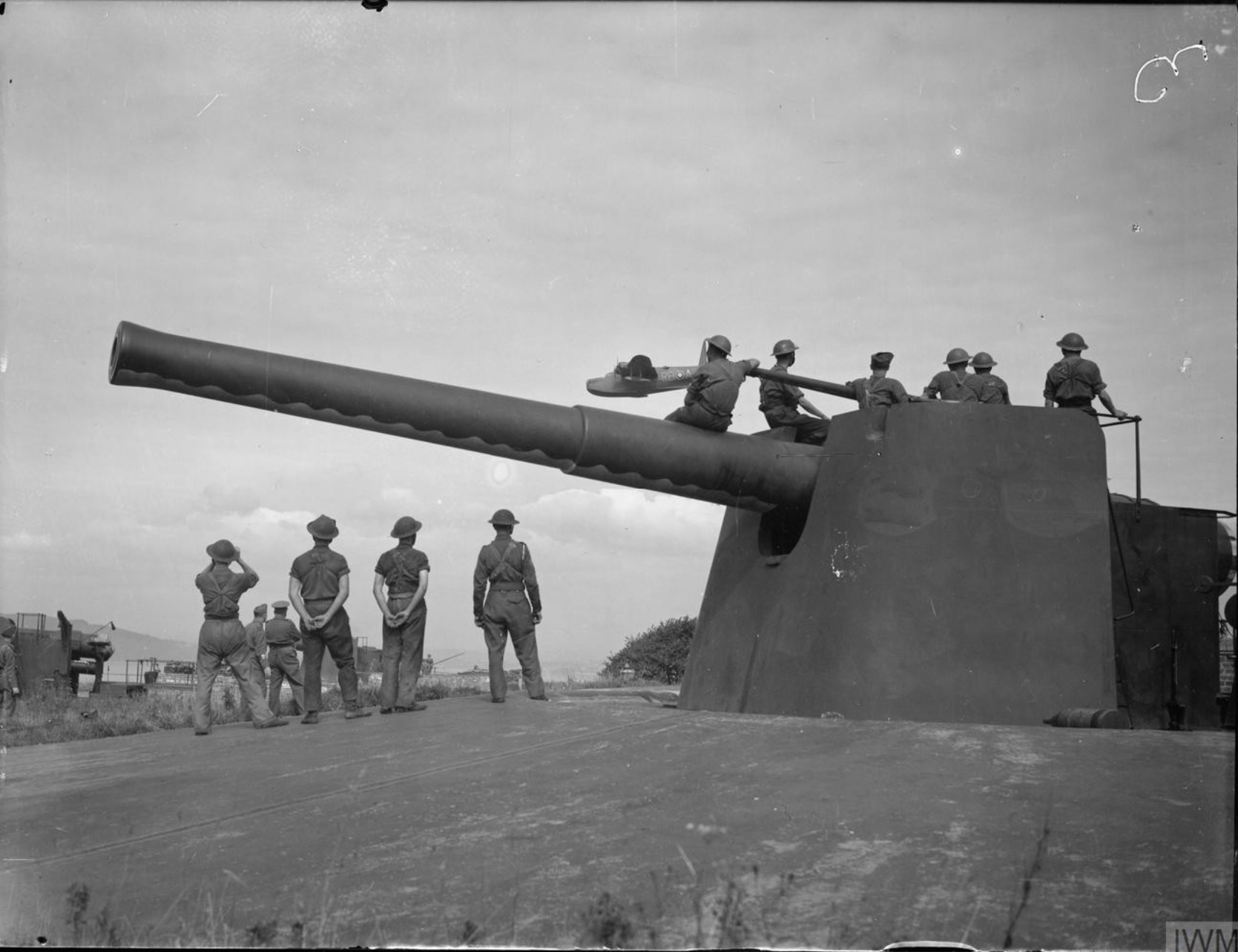
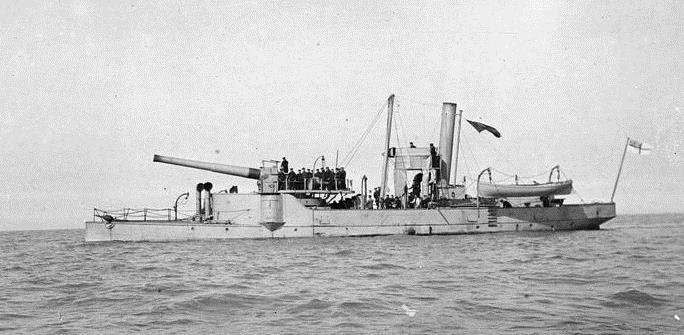
"Warrior to Dreadnought: Warship Development 1860-1905" and "The Grand Fleet: Warship Design and Development 1906-1922" both by D.K. Brown
"Big Gun Monitors: The History of the Design, Construction and Operation of the Royal Navy's Monitors" and "British Naval Gun Mountings: From 1890:
18-inch to 4.5-inch Mark 8" both by Ian Buxton
"Naval Weapons of World War Two" and "British Naval Guns 1880-1945 No 7" article in "Warship Volume VI" both by John Campbell
"The Naval Institute Guide to World Naval Weapon Systems 1991/92" by Norman Friedman
"Policy and Operations in the Mediterranean 1912-14" by E.W.R. Lumby
"Cruisers of the Royal and Commonwealth Navies" by Douglas Morris
"British Battleships: 1860 to 1950" by Oscar Parkes
"A Concentrated Effort: Royal Navy Gunnery Exercises at the End of the Great War" article by William Schleihauf in "Warship International" No. 2, 1998
---
Special help from Daniel Muir, Nathan Okun and Dave Alton
09 November 2008 - Benchmark
22 February 2009 - Added information about monitors
16 June 2012 - Added picture of HMS Natal
06 December 2015 - Redid photograph of HMS Good Hope, added link to IWM and changed Vickers Photographic Archive links to point at Wayback Archive
05 June 2022 - Converted to HTML 5 format, added photograph of coastal gun
10 March 2025 - Added mounting details, note about "Strengthened" and photograph of bow gun on HMS Good Hope
